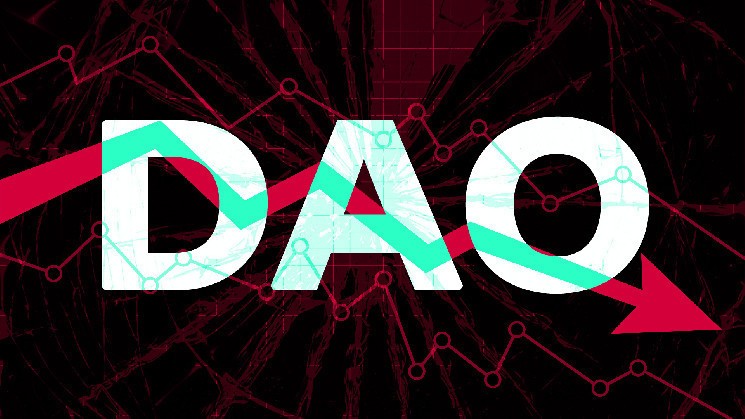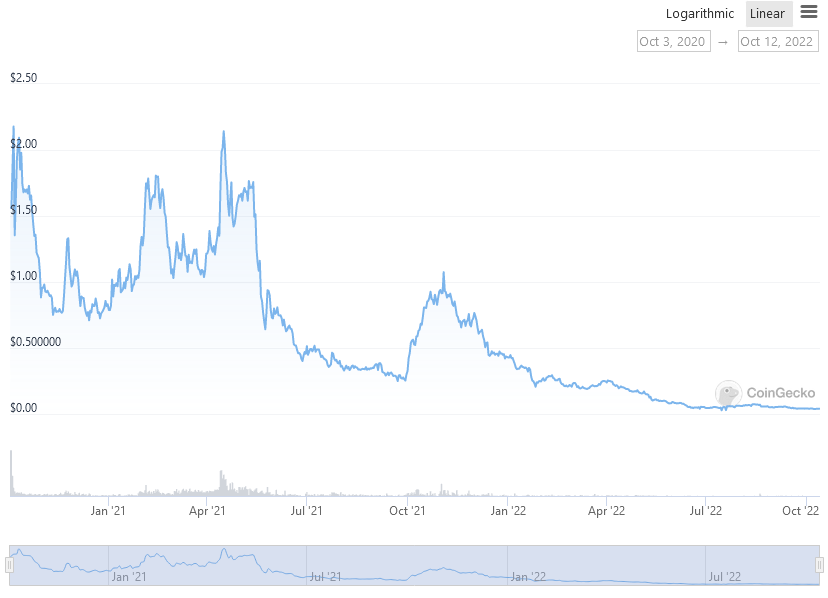PieDAO mulls ending liquidity mining after dough token slumps 98% in a year

PieDAO, a DeFi yield platform, is looking to end its token emissions to liquidity providers after the program drove down the value of its native token, called dough.
The incentive program — called Doughpamine — is among a slew of liquidity mining programs created by DeFi protocols to bootstrap liquidity. These projects rent liquidity from market participants in exchange for token emissions from the protocol.
While these programs can have benefits for DeFi protocols by attracting liquidity at the start of the project, they come at a cost. Because the token emissions used to reward liquidity providers (LPs) increase the number of the protocol’s coins in circulation, this can drive down their price.
In PieDAO’s case, the project distributed 18.8 million DOUGH since the start of its liquidity mining program in April 2021. The project rewarded LPs with these tokens for providing liquidity in four incentivized pools on the platform. The arrangement with the LPs is that 20% of the rewards are immediately liquid while the other 80% are under a one-year linear vesting schedule.
An end to PieDAO liquidity mining
PieDAO says renting liquidity comes at a considerable cost to its DAO treasury. The cost of liquidity — a measure of how much the protocol pays for every $1 worth of liquidity provided — for three of PieDAO’s four pools ranges from $0.50 to $0.86.
A high cost of liquidity is not beneficial for DeFi projects as it means that the rewards it has to pay out are almost at par with the liquidity being rented from LPs. Indeed, PieDAO stated that the cost has risen to as high as $1.52 in the past, meaning that there have been periods where the protocol was renting liquidity at a loss.
“The fact that the DAO has been overpaying for liquidity provision has certainly been contributing to the dough sell pressure, possibly inducing a resulting poor price performance,” the proposal stated.

PieDAO’s DOUGH token is down 98% since April 2020. Image: CoinGecko
PieDAO has seen its native governance token decline by over 98% from $2.14 when it started the program to $0.04 as of the time of publishing. It peaked at $6.27 in October 2020.
The DAO will hold a SnapShot vote to decide whether to halt liquidity mining for all four pools. For the vote to pass, 60% of participants have to support the motion. However, some in the community have asked that one of the pools, with a significantly lower cost of liquidity, should remain incentivized.
Mitigating the possible risks
The proposal authored by PieDAO core contributors and treasury committee members also identified some possible risks associated with ending incentivized token emissions for LPs. For one, the proposal’s authors recognize that LPs may decide to withdraw their liquidity if the project stops rewarding them. The proposal also identified the possibility that LPs may sell their remaining tokens once the vesting period ends.
To mitigate these risks, the proposal called for the DAO to institute a token buyback program. This program aims to reduce the circulating supply of dough tokens. As such, the DAO may be intending to burn the tokens.
With the pivot away from renting liquidity from LPs, the DAO will need to come up with another way to obtain liquidity. One viable option already being discussed in the community is the protocol-owned liquidity model used by the likes of OlympusDAO. In protocol-owned liquidity, the DeFi project does not rent liquidity from LPs. Instead, the protocol acquires liquidity provider tokens from market participants. In this way, the protocol has autonomy over the underlying liquidity owned by those token positions.
PieDAO is the latest DeFi protocol to consider ending its incentivized token emission scheme. Decentralized exchange aggregator ParaSwap recently announced that it was looking to reduce its native token emissions as well as move to a social escrow system.






 Bitcoin
Bitcoin  Ethereum
Ethereum  Tether
Tether  USDC
USDC  Dogecoin
Dogecoin  TRON
TRON  Cardano
Cardano  Stellar
Stellar  Chainlink
Chainlink  Hedera
Hedera  Bitcoin Cash
Bitcoin Cash  LEO Token
LEO Token  Litecoin
Litecoin  Monero
Monero  Dai
Dai  Cronos
Cronos  OKB
OKB  Ethereum Classic
Ethereum Classic  Algorand
Algorand  VeChain
VeChain  Cosmos Hub
Cosmos Hub  Gate
Gate  KuCoin
KuCoin  Stacks
Stacks  IOTA
IOTA  Tether Gold
Tether Gold  Theta Network
Theta Network  Zcash
Zcash  Tezos
Tezos  TrueUSD
TrueUSD  NEO
NEO  Polygon
Polygon  Decred
Decred  Dash
Dash  Qtum
Qtum  Zilliqa
Zilliqa  Basic Attention
Basic Attention  0x Protocol
0x Protocol  Synthetix Network
Synthetix Network  Ravencoin
Ravencoin  Siacoin
Siacoin  Holo
Holo  DigiByte
DigiByte  Enjin Coin
Enjin Coin  Ontology
Ontology  Status
Status  Nano
Nano  Hive
Hive  Waves
Waves  Lisk
Lisk  Steem
Steem  Pax Dollar
Pax Dollar  Numeraire
Numeraire  BUSD
BUSD  Huobi
Huobi  OMG Network
OMG Network  NEM
NEM  Bitcoin Gold
Bitcoin Gold  Ren
Ren  Bitcoin Diamond
Bitcoin Diamond